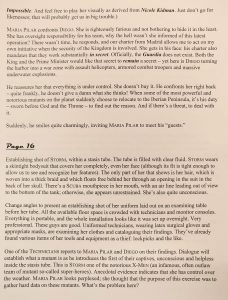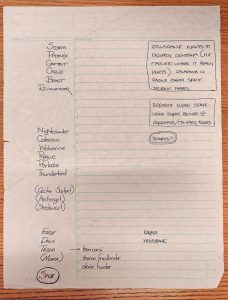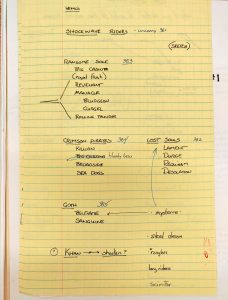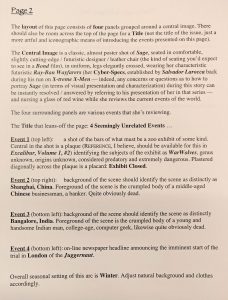What brings you to Columbia’s Rare Book & Manuscript Library?
When I heard that Chris Claremont was donating all his material to the University I knew that I had to go check it out. Even though CU is not exactly ‘around the corner’ from my home. I wanted to have a look behind the curtains — his work process; nixed ideas; unpublished stories… any and every cool piece of information I could mine during those few days.
How long have you been using RBML materials (for this and/or previous research)?
A few days in December 2019, right before the world turned upside down in 2020. And again for a few more days in 2023. If I could, I’d go more often. There is still some material I’d like to cover.


What have you found? Did you come here knowing this material was here?
A more appropriate question would be what I didn’t find. Chris donated plots and full-scripts of some of my favourite (and less favouirte) stories. Proposals for arcs and projects that didn’t get greenlit. Correspondence with editors. Character models by some of the industry’s best pencilers. Essenetly, I think he dropped off virtually almost every scrap of paper he’d ever had including and not limited to cheques, grocery lists, address books, personal correspondence, etc. It’s wild.
What have you found that’s surprised or perplexed you?
I did expect this, but to actually see it — how detailed his plots are — and the way that he describes his characters to the artists. I knew he loved these characters but to actually read his descriptions of them. It also confirmed/validated my own interpretation/understanding of the characters. Here’s an example:
Additionally, I was surprised that he’d kept my design-sheet that I sent him through Marvel — and even used it in an issue! But the higher-ups made the creative team take it out and replace it with something else for legal reasons, despite the waiver attached to it. Oh well, at least I got to see it in his archive.


What advice do you have for other researchers or students interested in using RBML’s special collections?
With regards to the Claremont Archive? Come ready. Pick a specific character or several, or/and an era(s), project(s) that you’re most interested in to focus on in your research. Make a *list* of what you want to see. Pick the boxes wisly. Be as organised and as focused as possible otherwise I think that you risk being overwhelmed by the sheer volume of stuff. Like I said, he essentially donated *everything.*
Kudos to Karen Green for making sense of everything and making it all approachable.
Also — get comfortable; come as early as possible, leave as late as possible. And have fun!

